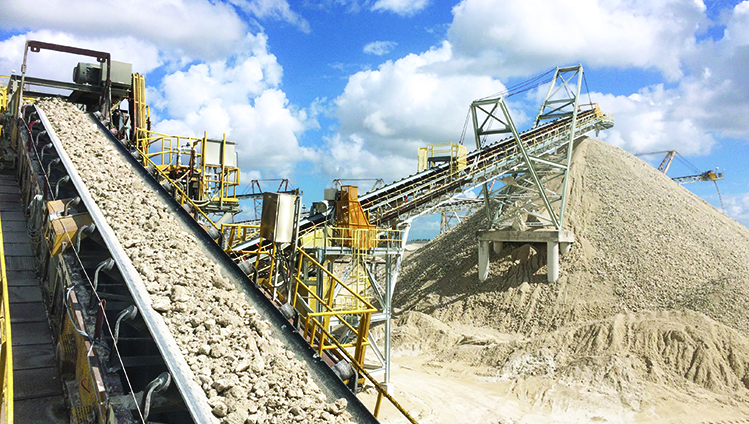Whether bridges, roads, factory buildings, commercial buildings, dams or even office and residential buildings: The global infrastructure is mainly built on cement. Within the construction sector, the finely ground bulk material is considered a binder as it hardens through chemical reaction with water – also called hydration – and then remains solid. Cement powder is ultimately used to produce popular building materials such as mortar and, above all, concrete.
Concrete combines many advantages: It is versatile, inexpensive, extremely hard, and it can be cast into almost any shape. In principle, it consists only of sand, gravel, water, and cement clinker, which itself is obtained by heating lime, clay, and some other components. Due to the booming construction industry, global production of cement has also been rising steadily for decades: In 2021, it amounted to an estimated 4.4 billion metric tons. More than two thirds of this amount was produced in Asia, led by China.
Innovative production methods to reduce emissions

However, during the production process, which is based on the combustion of fossil fuels, mostly coal, at temperatures around 1,000 degrees Celsius and sintering at around 1,450 degrees Celsius, a relatively large amount of emissions is released. This, in combination with the high demand and climate change, leads to a major challenge: Production should and must become more environmentally friendly.
This requirement is also reflected by numbers. Today, for example, eight percent of anthropogenic greenhouse gas emissions worldwide are attributable to cement production alone. According to current forecasts, global demand for cement will increase by an average of two to three percent per year, mainly due to increasing urbanization and investments in infrastructure. Based on these expectations, cement consumption will have almost doubled by 2050 compared to today.
While scientists develop innovative production methods, such as grinding instead of burning lime, there are other areas where the sector can still improve its processes and production. For example, modern conveyor belts, digital solutions and comprehensive service offers can contribute to extending a belt’s lifetime and making production more profitable and sustainable.
Digital solutions pave the path to success
Companies of the sector thus aim at maintaining their economic strength and resilience in the competitive global markets. Avoiding fines, achieving efficiency, and maximizing customer satisfaction are therefore the driving forces behind the cement industry’s evolution into a more digitized sector. In this context, digital transformation is not just a buzzword that is currently trending – it is a necessity.
In the near future, cement plants will be able to predict process behavior and product quality in advance and under dynamic operating conditions without having to put the entire production on hold. This, among other things, is made possible by conveyor and belt monitoring systems. In addition to impact and abrasive effects of the transported material, conveyor belts are often subjected to conditions that cause damage. In these environments, keeping the belt running is crucial for economic efficiency and success. Here, continuous monitoring helps to manage the entire system condition to ensure its availability and increase its lifespan.
Data provides the basis for artificial intelligence

While conveyors play a key role for many applications, their health and condition are crucial to minimize failures and downtime. Experts with broad skillsets provide comprehensive service for these complex systems, such as performing maintenance routines and regular condition checks. Moreover, web and mobile app service platforms provide their users with a centralized database and a toolbox that help to maximize the performance and profitability.
Intelligent solutions will help to successfully follow this path. Already today, there are various smart assets on the market. The Internet of Things (IoT), for example, provides automated data flows, visualized live data based on information from sensors installed at the conveyor or data-driven root cause analysis of failure modes and conveyor maintenance. After all, such data analysis tools and technical support from service providers are the basis for artificial intelligence (AI) and machine learning. By using AI, which will play a major role in the future of the cement industry, it will soon be possible to maintain conveyor systems on time and predict the product quality of cement clinker.
Service throughout the entire life cycle
In addition to more climate-friendly production methods and digital solutions, service is also a crucial aspect for increasing efficiency, and customer experience is another key building block for the future of the industry. From the replacement of former applications to installation, inspection, maintenance, repair, audits, emergency call-out support, belt splicing and refurbishment – the range of services supports the extension of a conveyor belt’s life cycle.
With a wide range of services, innovative digital solutions and highly resistant conveyor belts, Continental offers a comprehensive package for the companies operating in the cement sector. Today and in the coming years, the challenge is to exploit these opportunities and find climate-friendly production processes. The path is challenging, but if the industry breaks new ground, it will continue to be the foundation for global infrastructures.








